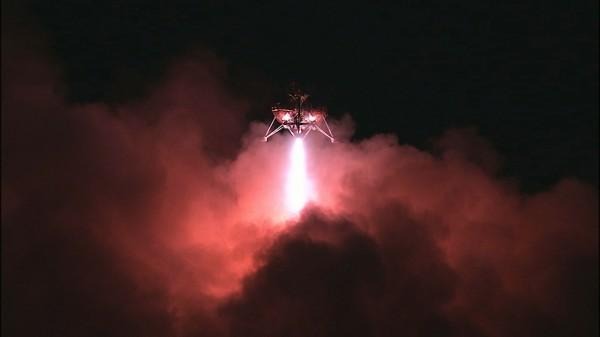Forget Google's Self-Driving Car: NASA's Morpheus Aces Autopilot Test
NASA's pogoing Morpheus spacecraft has been showing off its nighttime landing skills, putting Google's self-driving car to shame by showing how the unmanned pod could set down autonomously on a distant planet. The test was the first time Morpheus had used its self-piloting descent system at night, proving the technology would work even in situations where the surface of a planet or moon might not be visible to the naked eye.
Instead, Morpheus' Hazard Detection System uses three light detection and ranging sensors, the same LIDAR technology as Google mounts on top of its self-driving cars in fact. In NASA's case, these are used to spot potential hazards and obstacles on the ground – like craters or rocks which could foul the lander's legs – and adjust its descent.
This latest test only lasted 98 seconds, but is nonetheless a breakthrough for Morpheus. The pod rose to over 800 feet above the site, and then flew forward and down over around 1,300 feet to the landing field.

The Hazard Detection System picked its own spot for touch-down on NASA's simulation of a lunar-like surface, and descended automatically, including carrying out a 78 foot divert which the space agency says simulates a hazard-avoidance maneuver.
NASA expects the Autonomous Landing Hazard Avoidance Technology to turn Morpheus – or future landers based on the prototype – into self-piloting cargo pods delivering supplies and technology to other planets.
For instance, a fleet of pods could take a swarm of self-organizing robotic termites to Mars, which would then intelligently build the infrastructure necessary to support human colonists in advance of their arrival. Meanwhile, Morpheus is also eco-friendly, NASA says, running its engines on liquid oxygen and methane.
SOURCE NASA
